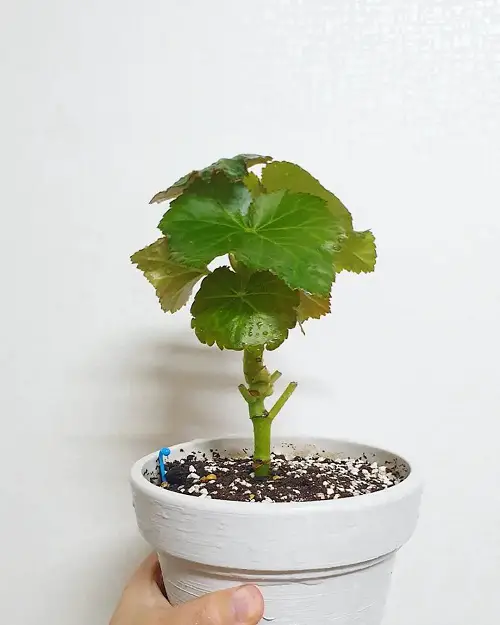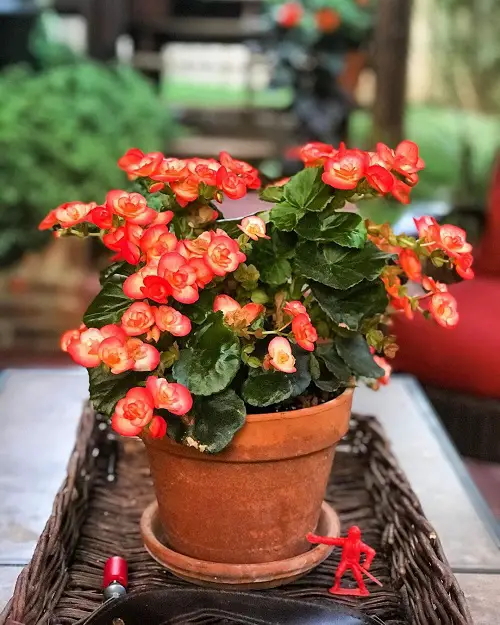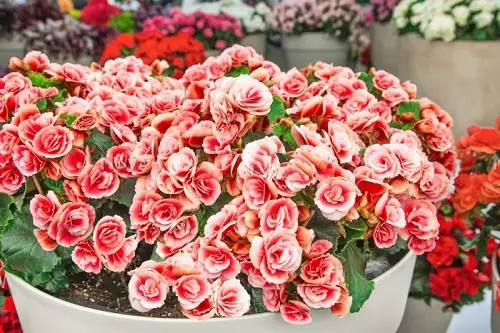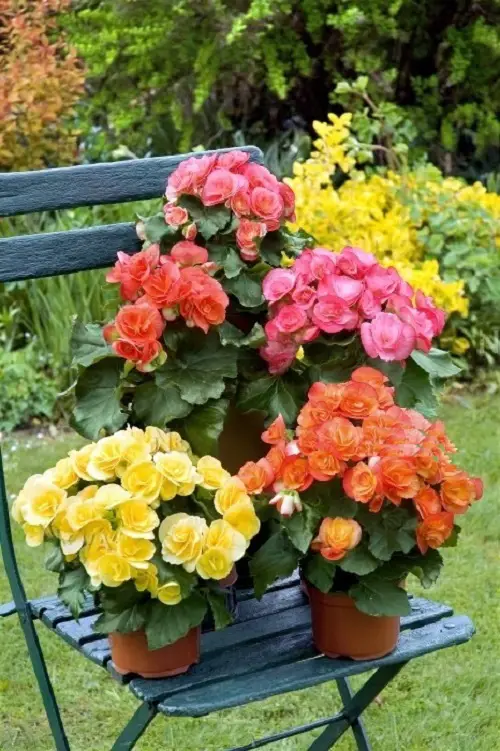Here is complete information on Elatior Begonia care and a growing guide that will help you grow these stunning flowers with ease!

Elatior Begonias are beautiful and easy-to-grow houseplants that add color and beauty to any indoor space. With proper care, these plants can bloom year-round, providing a long-lasting display of colorful flowers.
Check out the best types of Begonias
Elatior Begonia Information
The Elatior begonia is a cross between tuberous and wax begonias, resulting in a plant that has the best features of both varieties.
It is a popular houseplant, famous for its attractive foliage and colorful blooms. It has been cultivated for centuries in Europe, Asia, and North America for its beauty.
The plant is also known for its tolerance of low light levels and its ability to thrive in both indoor and outdoor settings. The Elatior Begonia is a favorite among gardeners due to its easy care and long-lasting blooms.
The height and spread of Elatior Begonias can vary depending on the variety. Generally, they can reach heights of 12-18 inches (30-45 cm) and spread of 16-20 inches (40-50 cm).
USDA Zones: 8-11
How is Elatior Begonia Different from Regular Begonia?
The Elatior begonia is a hybrid variety of begonia that is more compact and has larger, more vibrant flowers than regular begonias. It is also more disease-resistant and can tolerate more heat than other varieties of begonias.
Propagating Elatior Begonia

Propagating Elatior Begonia is an easy and cost-effective way to grow new plants from your existing ones.
- Take a 4-6 inches long cutting from a healthy Elatior Begonia plant. Remove the lower leaves from the stem, leaving only one or two leaves at the top.
- Dip the cut end of the stem into rooting hormone and place the stem into a small pot filled with moist, well-draining potting soil.
- Water well and cover the pot with a plastic bag or plastic wrap to create a humid environment for the cutting. Keep it in a bright and indirect light location.
- After a few weeks, check for new growth, which indicates that roots have formed. Continue to care for the plant as you would for a mature Elatior Begonia plant.
Learn How to Propogate Begonias
Best Pot Size for Elatior Begonia
You can start the Elatior begonia plant in a 6-8 inches container. The root system of this plant is not overly large, so a pot that is too big will cause it to be root-bound and unable to absorb water and nutrients.
Requirements for Growing Elatior Begonia

Sunlight
Elatior begonias require bright, indirect light to thrive. Direct sunlight can scorch the leaves and cause the plant to wilt. For best growth and flowers, pick a spot where it gets the mild morning sunlight for 3-4 hours and then remains a dappled light for the rest of the day.
Soil
Elatior Begonia is a tropical plant that prefers moist, humus-rich soil that is well-draining. The ideal growing medium would be a mixture of peat moss, perlite, and vermiculite in equal parts.
The soil should also be slightly acidic, with a pH of 6.0-6.5. Adding a slow-release fertilizer such as Osmocote at the time of planting can also be beneficial for the health of the plant.
Watering
Water your elatior begonia when the top 1-2 inches of soil feels dry. Always allow the soil to dry out between waterings. Be careful not to overwater, as this can cause root rot.
Temperature and Humidity
These plants prefer temperatures between 65-90 F (18-32 C). They also need high humidity levels of 50-60%. You can increase the humidity by keeping its pot on a tray filled with pebbles and water.
Read about Gryphon Begonia Care
Elatior Begonia Care

Fertilizer
Use a balanced, liquid fertilizer once in 4-6 weeks after diluting it to 1/2 of its strength. This will help the plant to produce more flowers. It’s best to avoid fertilizing in winter when the plant is dormant.
Alternatively, you can also add aged manure and compost in the growing medium every month.
Pruning
Pruning Elatior Begonia should involve removing any dead or diseased leaves and stems as well as any overly large or crowded growth. This will help to promote air circulation and light penetration, which can help prevent disease and encourage healthy new growth.
It will also help to shape and control the overall size and shape of the plant. Do this around spring.
Pests and Diseases
Common Pests:
Use neem oil solution or insecticidal soap to get rid of pests as you spot them.
Common Diseases:
- Bacterial Blight
- Botrytis Blight
- Crown Rot
- Rust
- Southern Blight
- Viral Diseases
To keep most of the diseases at bay, avoid overwatering the plant and ensure it gets plenty of sunlight and air circulation.
Check out Stunning Begonia Maculata Varieties
Are Elatior Begonia Plants Toxic to Animals?
Yes, these plants can be toxic to animals if ingested. The plant contains calcium oxalate crystals, which can cause irritation and swelling of the mouth, tongue, and throat if consumed. This can lead to difficulty breathing, drooling, vomiting, and diarrhea.
Therefore, it is important to keep it out of reach of pets, especially cats and dogs, who are known to be curious and may chew on plants. If you suspect that your pet has ingested any part of the Elatior Begonia plant, seek veterinary attention immediately.




